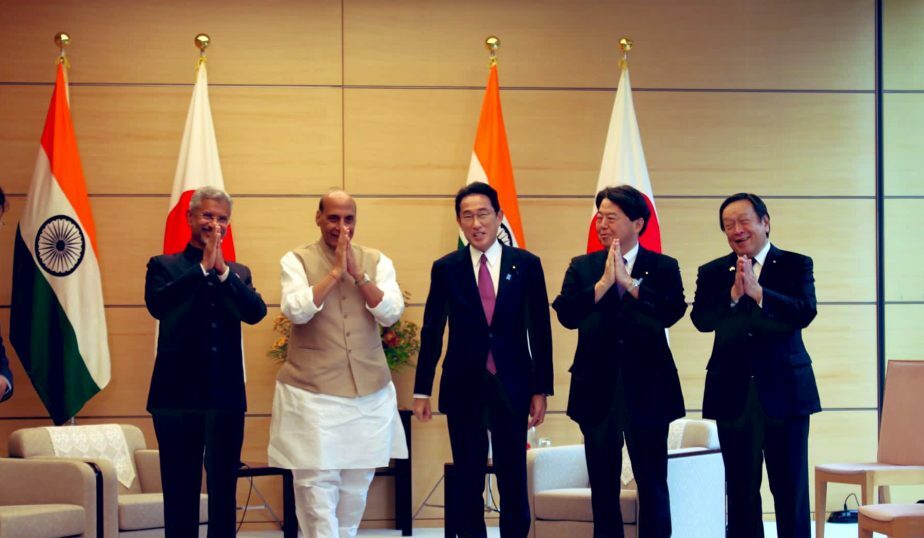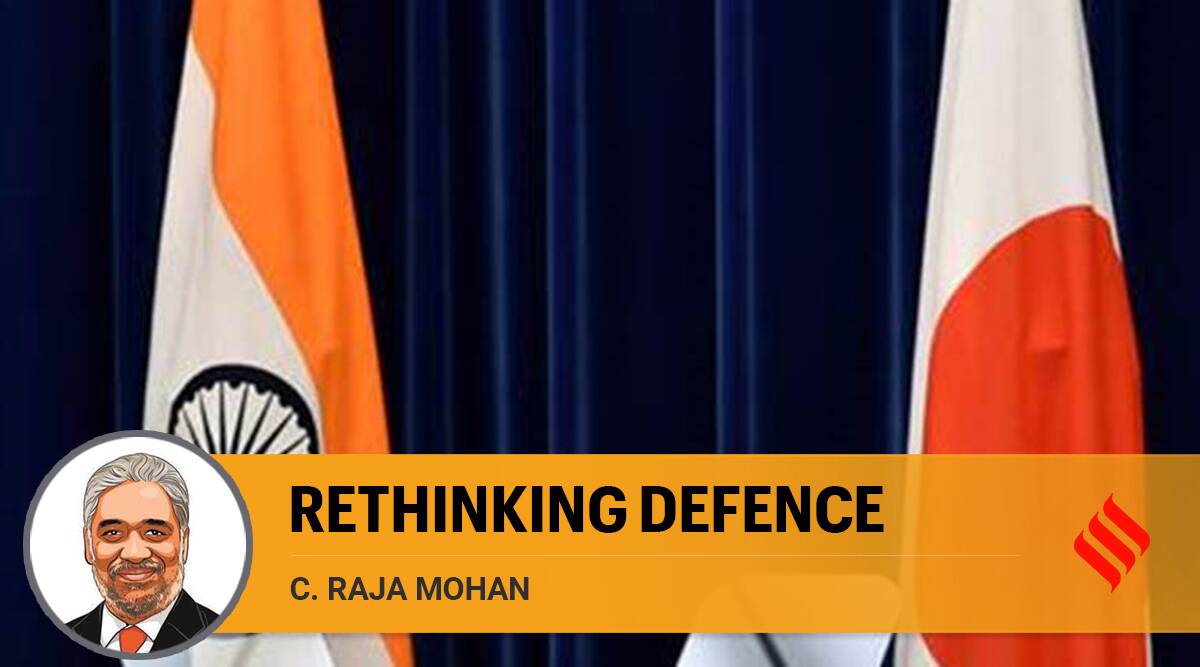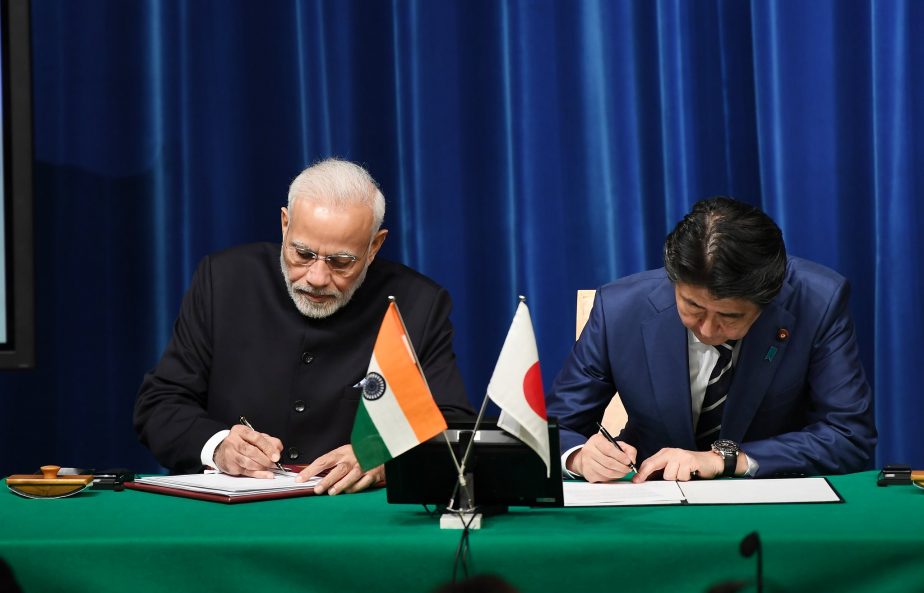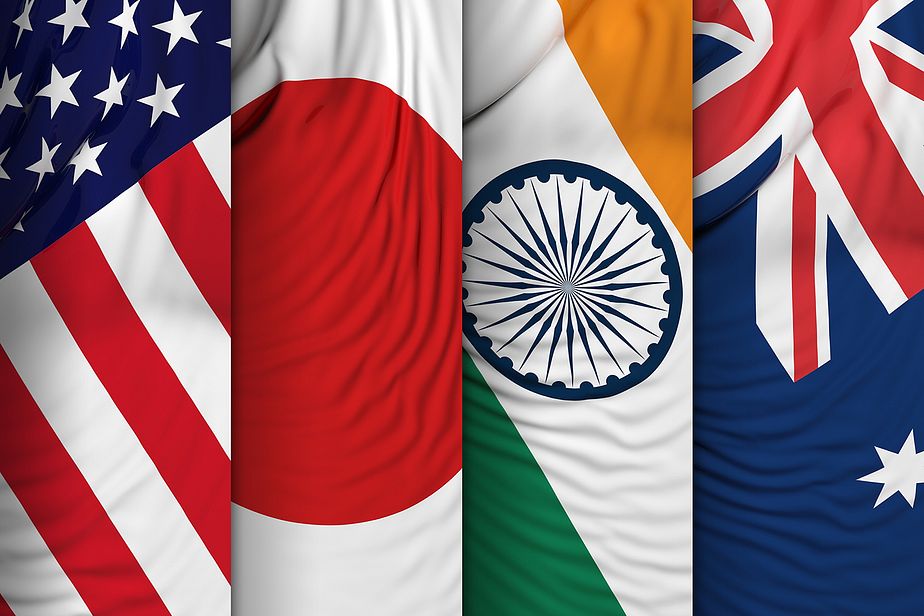India and Japan Hold 2+2 Ministerial Dialogue
THE DIPLOMAT
APLN member Rajeswari Pillai Rajagopalan wrote for The Diplomat and argued that the India-Japan engagement has been enhanced both on the bilateral front as well as in minilateral formats such as the Quad in recent years. Read the original article here.
India-Japan relations have grown from strength to strength in the last decade, with significant personal drive and commitment from the top leadership in both Tokyo and New Delhi. The two countries held their 2+2 Ministerial Dialogue in Tokyo on September 8, for which both India’s External Affairs Minister Dr. S Jaishankar and Defense Minister Rajnath Singh traveled to Japan. Late Japanese Prime Minister Abe Shinzo was a driving force in nurturing the India-Japan relationship, but it appears that relationship is set to continue with the same vigor under Prime Minister Kishida Fumio as well. The 2+2 Ministerial Dialogue is a reflection of the commitment from both sides to keep up the momentum in the India-Japan relationship. The rapidly changing nature of threats in the Indo-Pacific, including the strategic consequences of China’s rise, are added imperatives to further this momentum.
In his opening remarks to the bilateral 2+2 Ministerial Dialogue, Jaishankar reiterated the importance of the meeting, saying that it reflected India’s “commitment towards deepening our bilateral security and defense cooperation and also demonstrating the strength of our Special Strategic and Global Partnership.” He added that the relationship, “rooted in our shared values of democracy, freedom, and respect for rule of law,” is ever more important in the context of “very serious developments” that demand “common solutions through the path of dialogue and diplomacy.”
The Russian invasion of Ukraine is one of the “very serious developments” that Jaishankar was likely referring to, but India and Japan have differed on their responses. Japan is among the countries that have taken tough measures against Russia, including sanctions against Russian entities; India has continued to argue for a return to diplomacy to resolve the current conflict. The Indian posture also sets New Delhi apart within the Quad.
Even as these differences remain, Japanese Foreign Minister Hayashi Yoshimasa spoke on the broader security environment, suggesting that “[a]s we face many challenges in the Indo-Pacific and beyond the region today, we want to share the awareness of the security environment in the region so that we can achieve a concrete and strong cooperation between us.”
Following the conclusion of the 2+2 Dialogue, Jaishankar said in a press statement that the Dialogue was happening at a time of a “complicated global environment.” He added that in this context, India and Japan are two countries “committed to promoting a rules-based order, ensuring respect for international law and norms, and safeguarding the global commons.” He made a strong case for stronger India-Japan relations given this backdrop and added that New Delhi and Tokyo should work closer on foreign and security policies. Identifying some of the emerging tech areas in addition to conventional issues, Jaishankar said the two are working on cyber security, 5G deployment, and critical and strategic minerals, which were all part of the Dialogue.
Deepening defense exchanges, augmenting maritime cooperation including Maritime Domain Awareness (MDA), and boosting defense equipment and technological cooperation were areas covered in Indian Defense Minister Singh’s conversation with his counterpart, Hamada Yasukazu. The two ministers also discussed ways to strengthen engagements in emerging and critical technologies. Providing an overview of the security and defense ties, Singh said that “the participation of Japan for the first time in the multilateral exercise MILAN and operationalization of the Reciprocal Provision of Supply and Services Agreement in March this year are milestones in the progress of defense cooperation between our Forces.” There are also now regular “staff talks and high-level dialogue between all the three Services and the Coast Guard,” in addition to talks between the staff of both the Joint Staff of the Japanese Self-Defense Forces and the Integrated Defense Staff of India. Singh also highlighted the Indian Indo-Pacific Oceans Initiative (IPOI) that “shares many commonalities with Japan’s Free and Open Indo-Pacific (FOIP).”
Hamada agreed with the Indian minister on the qualitative shifts that have taken place in the India-Japan defense and security ties and added that these will see “new highs” in the future, including their plans to undertake the first joint fighter jet training.
The India-Japan engagement has been enhanced both on the bilateral front as well as in minilateral formats such as the Quad in recent years. In fact, just a few days ago, the Quad Senior Officials Meeting was hosted by New Delhi. There officials “discussed regional and global developments, reaffirming their vision for a free, open & inclusive Indo-Pacific.” On the sidelines, the India-U.S. 2+2 Inter-sessional meeting as well as the India-U.S. Maritime Security Dialogue were held, indicating a growing convergence of Indian strategic interests with those of the Quad members.
Thus, despite some disagreements regarding the Russian invasion of Ukraine, as well as some small progress in disengagement of forces along the China-India border, India’s relations with its new strategic partners in the Quad appear to be deepening steadily.
Image: Twitter




